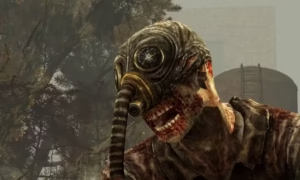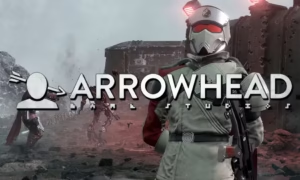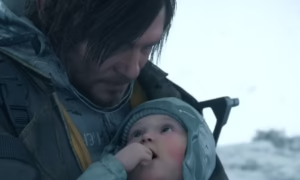Trouble Hunter Chronicles: The Stolen Creed Review – Let Us Search for the Bushes
Iskonsko Studio reached out to me over a year ago and provided a key for their demo game: Trouble Hunter Chronicles. Now, I was able to access the entire game by them again. I was ready to tackle another prospect in the Point and Click genre after just recently playing another title . It would prove to be a difficult, often frustrating task due to my relative inexperience.
It was expected that it would be very similar to the demo build. It was a fully-fledged world with characters and secrets, which surprised me. It’s almost like playing through the entire Legend of Zelda game instead of just one Legend of Zelda chapter. There is a common theme: there are more things to explore, interact with, or get stuck on. The game’s value will depend on how much you enjoy puzzle-solving or inventory-tinkering.
Story – Finding Remy
One is an ex-OSS operative who was sent to post-war France by a woman asking them to help find “Remy,” which is the game’s name. This will lead him on a perilous journey into dark secrets and “crazy Frenchmen”.
The story is a key component of the genre and provides motivation to keep going. It’s a very brief, but still intriguing display of mystery for Trouble Hunter Chronicles. The player has very little information. Remy is missing. Remy is an old friend. His apartment was also ransacked before the case was taken. It doesn’t matter what happened to him. Other things will likely have a lot of weight.
There was never a moment when I felt the story wasn’t interesting enough. It may seem ironic to say it later, but it is partly because it rarely reared its head. Good mystery stories should be careful about the details that lead up to the big reveal. It is important to leave enough for the reader to follow. The game isn’t too generous or too modest, and it has enough real progress to keep the action moving. It will keep going until it stops. More on that later.
A good mystery can lead to interesting characters. Although there is nothing extraordinary here, many French citizens have enough personality and charm to keep conversations interesting, if not always straightforward. Your character is not one for idle chatter. Interaction with most people in a scene is possible. They can also provide subplots which may be necessary for the main story. Some people are more funny than others. A citrus vendor can’t stop talking about oranges. You can also speak to an elderly widow visiting her husband’s grave. Although the tone can sometimes be polarizing, the writing balances both sides well.
Gameplay – for Veterans
The Trouble Hunter Chronicles demo consisted mainly of exploring two rooms and fiddling around with inventory items. The script ends up being somewhat flipped in the full game. Most of it now consists of exploring many areas and very rarely fiddling around with inventory items. (At least, initially.) Character interrogation, which was almost absent from the demo, is now quite common. This is the first of three gameplay loops: travel, talk, and tinker.
This is a Point & Click game so there are not many controls required. In first-person, you are browsing for objects or people to interact with in specific areas. Talk is a conversation with locals to get information and suggestions on where/what to do. Travel is a journey that takes you around a maze-like path, which eventually leads to the end. Tinker makes sure that your inventory is available at the right points. This applies to items used in combination or within the environment.
It doesn’t try to be anything more than the norm in this genre. Similar to The Sundew it is more at ease replicating classics for the new generation. This is also evident when it comes to difficulty. This is, to my mind, the game’s greatest fatal flaw.
Trouble Hunter Chronicles is a great place to start. Those who are more inclined to the genre will feel right at ease. Many times I needed to consult Steam’s Discussion forums or the developer’s Discord to find out what to do in certain situations. Some were due to my lack of intuition. Others, I would argue, the game doesn’t explicitly state that it is possible.
Talk / travel/ Tinker is the most important model. Then, it becomes crucial. If there are two or more items in an inventory, they will automatically combine as long as the player uses the right one. These combinations may not appear to be very reasonable at first, but they do change after the fact. Some of the items I mix for a purpose that I didn’t know I was doing were things I did not even realize I was doing. Randomly combining items out of frustration or desperation, at least in my limited experience, is not a great experience.
Other factors can also contribute to a back-and-forth between natural progress and trying to overcome obstacles of varying sizes. I don’t know how many times I’ve finally found the answer, only to find out it’s just Step 4 of Step “?.”. Huzzah! I was able to convince some boys to help me transport a crate to an elderly woman. The old woman now wants me to open her crate. I can’t even do it with my hands. I thought the puzzle trail was finished, but it never ends. It reminds me of GraveyardKeeper – the path to the end can be long and exhausting.
Despite the mystery of the story, I still find the simplicity of the gameplay to be quite addictive. Although I was discouraged at times, I felt the need to keep going. Whether it was through luck, random experimentation or an ever-rare epiphany, I learned that most things were clear over time. This is a satisfying game for anyone who loves Point & Click, regardless of their skill level. However, advanced knowledge is required to get further.
Graphics and Audio – 1945 and 2020
The demo had a very simple approach to art that stood out to me almost immediately. Most things are just linework, with one layer of color and some shading. It is not very detailed and may seem a little amateurish. Given its demo status, however, I let it go. It did its job, but the service it provided to the gameplay was the most important. The full game is now available. There’s much more to see and interact with. Some of it retains the demo’s simplicity, however.
The artistic integrity is more important than anything. Character portraits are distinctive and almost dreamlike. They have a lot to do with color mixing and detail. It is a far cry from , where it started. However, environments can sometimes be quite shaky. There is a lot of unfinished coloring, and simple designs that don’t evoke much emotion. These tend to clash with otherwise quite good character portraits. However, some portraits of characters look better than others.
There are animated segments scattered throughout the game, with varying quality. While some are in keeping with the overall aesthetic of the game they can sometimes feel a bit rushed. Even if they are just idle animations, I appreciate the effort put into making the game feel alive. It needs to be improved.







